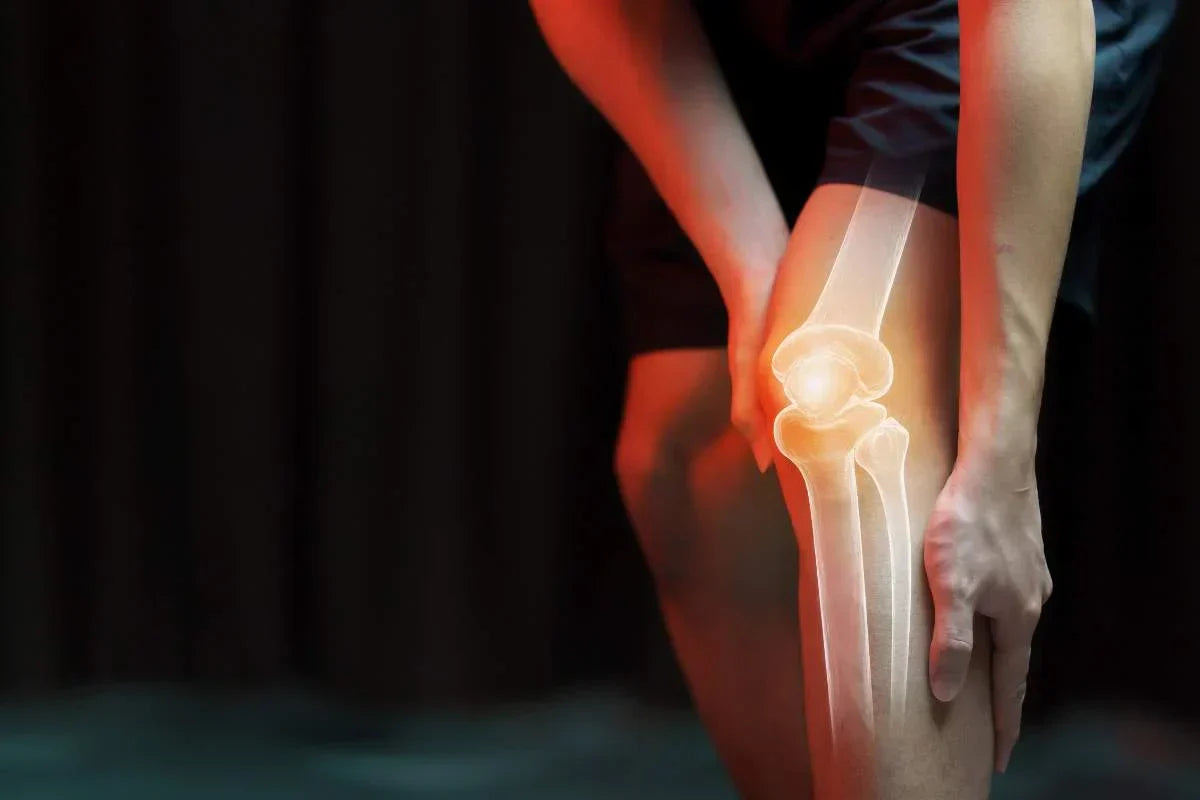Joints are essential structures for our mobility, ensuring fluidity of movement and support for the body on a daily basis. However, with age, intense physical activities or certain pathologies such as osteoarthritis, their proper functioning can be impaired, leading to pain, stiffness and loss of flexibility. Faced with these inconveniences, many people turn to food supplements to preserve their joint capital and improve their comfort.
But which supplements should you choose? How effective are they? What are the risks and precautions to take? This is what we will see in this article.
- Why take joint supplements?
- The best food supplements for joints
- When to take a cure for joint well-being?
- When to see a professional for joint pain?
Why take joint supplements?
- Support for articular cartilage : Substances such as glucosamine and chondroitin are naturally present in cartilage and contribute to its structure and elasticity. Some studies suggest that glucosamine supplementation may slow the progression of osteoarthritis, although there is some uncertainty about the optimal dose.
- Reduction of inflammation : Compounds such as unsaponifiables of avocado and soybean oils have been shown, in some clinical studies, to contribute to the relief of pain linked to osteoarthritis.
- Essential nutrient supply : Methylsulfonylmethane (MSM), a source of sulfur, is present in high concentrations in the joints and is used in the synthesis of cartilage components. MSM has thus long been used in cases of joint discomfort.
Warning! It is important to note that the effectiveness of dietary supplements may vary depending on individuals and the products used. In addition, some health claims regarding these products have been banned by European health authorities due to insufficient evidence.

The best food supplements for joints
Glucosamine
Naturally occurring in the body, glucosamine is a key component of cartilage, contributing to its formation and repair . Studies suggest that glucosamine supplementation may slow the progression of osteoarthritis by maintaining the integrity of cartilage. However, since 2012, European health authorities have banned dietary supplements containing glucosamine from making joint-related health claims, due to insufficient scientific evidence.
Precautions for use
Glucosamine may increase the body's resistance to insulin. It is therefore strongly discouraged for people with type 2 diabetes or obesity. Its possible side effects are heartburn and diarrhea. People with asthma or allergies to shellfish are sometimes allergic to glucosamine .
Chondroitin sulfate
Chondroitin sulfate is another essential component of cartilage, providing elasticity and strength . It is often used in combination with glucosamine to enhance their respective effects. Research suggests that chondroitin may help reduce symptoms of osteoarthritis. However, as with glucosamine, health claims for chondroitin in dietary supplements have been banned by European authorities since 2012.
Precautions for use
Chondroitin sulfate is not recommended for people with hemophilia or those receiving anticoagulant treatment. It is best to use it under medical supervision . Due to their high sodium content, some chondroitin sulfate products should not be used in the case of a salt-free diet. Its side effects are identical to those of glucosamine.
SAM-e (S-adenosyl-L-methionine)
SAM-e is a naturally occurring molecule involved in a variety of biological functions, including joint health . Studies have shown that SAM-e may be as effective as some nonsteroidal anti-inflammatory drugs (NSAIDs) in reducing joint pain, without the associated side effects. However, its use as a dietary supplement for joint health is limited in Europe, and health claims for it were rejected in 2012.
Precautions for use
SAM-e is contraindicated in people with bipolar disorder, Parkinson's disease or who are taking medications for depression . It can sometimes cause digestive discomfort at the beginning of treatment.
Omega-3 fatty acids and gamma-linolenic acid (GLA)
Omega-3 fatty acids, mainly found in oily fish, and GLA, an omega-6 fatty acid, have anti-inflammatory properties . A diet rich in these fatty acids may help reduce the production of pro-inflammatory substances in the body, potentially benefiting people with inflammatory joint diseases. However, current scientific evidence is insufficient to support their specific effectiveness in treating osteoarthritis, and health claims relating to them have been banned in Europe since 2012.
Precautions for use
Omega-3 fatty acids and gamma-linolenic acid are said to have anticoagulant properties that warrant medical monitoring in people who are simultaneously taking blood-thinning medications .
=> CTA
It is important to note that, despite health claim bans by European authorities, these substances continue to be studied for their potential effects on joint health. Before starting any supplementation, it is recommended to consult a healthcare professional to assess the potential benefits and associated risks, taking into account the most recent scientific data.
When to take a cure for joint well-being?
A joint cure consists of following a treatment over a defined period in order to relieve joint pain, improve mobility and prevent cartilage wear. These cures can include food supplements (glucosamine, chondroitin, collagen, turmeric, etc.), spa treatments or even drug treatments depending on the needs.
When is it prescribed?
A joint cure is recommended in several situations:
- Prevention : for athletes, people prone to joint pain or those with a family history of osteoarthritis.
- Chronic joint pain : in case of osteoarthritis, rheumatism or recurring inflammation.
- Seasonal changes : especially in autumn and spring, periods when joint pain can become more pronounced.
- Post-traumatic : after an injury (fracture, sprain) or joint surgery to promote recovery.
For optimal effectiveness , these treatments must be adapted to each person and followed over several weeks , generally 2 to 3 months , according to the recommendations of a health professional.

When to see a professional for joint pain?
Joint pain can be occasional or chronic and have a variety of causes, from simple overexertion to more serious conditions such as arthritis or osteoarthritis . While some pain can be relieved with simple measures, such as rest, ice, or taking over-the-counter anti-inflammatory medications, it is important to know when to see a healthcare professional to avoid any worsening.
Joint pain that persists or becomes recurrent should be a warning sign. If the pain does not improve after several days of rest and local care, this may be a sign of a more serious problem requiring medical advice . For example, repeated pain in the knee or hip may reveal progressive wear and tear of the cartilage, a precursor sign of osteoarthritis.
Other symptoms should prompt prompt medical attention. If a joint is swollen, red, and hot , this may indicate an inflammatory process or joint infection , requiring prompt medical attention. Inflammatory arthritis, such as rheumatoid arthritis, often manifests itself as significant joint stiffness upon waking, which lasts for more than an hour. This type of pain should not be ignored, as early treatment can often limit the progression of the disease.
A fever associated with joint pain is another warning sign . A generalized infection, septic arthritis or even some autoimmune diseases can cause these types of symptoms. In these cases, urgent medical consultation is essential.
It is also essential to consult a doctor if the joint becomes difficult to move or has a visible deformity . A loss of joint mobility, especially if it worsens gradually, may be a sign of a degenerative pathology requiring specialized monitoring.
Finally, even in the absence of these alarming signs, it is advisable to consult a professional if joint pain impacts the quality of daily life. If the pain prevents you from walking, getting up without difficulty or limits your usual activities, a doctor will be able to suggest appropriate treatment and refer you to a specialist if necessary.






